Greenland, the world’s largest island, is a land of immense beauty, rich history, and captivating mysteries. As we embark on a journey of discovery, we unveil 60 interesting facts about Greenland. From its breathtaking landscapes to unique cultural nuances, Greenland offers a tapestry of wonders waiting to be unraveled.
Join us on this exploration as we delve into the wonders of the Arctic, uncover the tales of ancient civilizations, and shed light on the modern facets that make Greenland a truly extraordinary destination.
Get ready to be enthralled by 60 facts about Greenland and deepen your understanding of this remarkable Arctic jewel.
60 Fascinating Facts about Greenland
1. Greenland – The Biggest Island on Earth!
Greenland holds the title of being the largest island globally, and it’s not even a whole continent! Picture this – it’s as vast as Western Europe, or about one-third the size of Australia or the main part of the USA. In fact, it’s the 12th largest country globally!
So, when you’re planning your trip, remember, Greenland is no small adventure!
2. Once Upon a Green Land
Despite the snowy and icy appearance of Greenland today, it wasn’t always like that. The name “Greenland” may sound misleading, given its icy landscape, but there’s an interesting story behind it. The moniker comes from Erik The Red, an Icelandic man with a dark past, who hoped to lure settlers to the island by giving it an appealing name.
Interestingly, more than 2.5 million years ago, Greenland was actually quite green, as revealed by a recent study. Scientists found evidence of ancient soil that had been frozen for millions of years beneath about 2 miles of ice, offering a glimpse into Greenland’s verdant history.
3. Greenland’s Linguistic Diversity
In Greenland, a fascinating mix of languages is spoken. The majority of the population is fluent in both Greenlandic, mainly Kalaallisut, and Danish. Since the establishment of home rule in 1979, these two languages have played a vital role in public affairs.
Today, the younger generation learns both languages, along with English, in school. Greenlandic, with its rich history, is closely connected to Inuit languages in Canada, like Inuktitut. Interestingly, some Greenlandic words, such as “kayak” and “igloo,” have made their way into other languages.
4. The Official Language of Greenland’s
In 2009, when Greenland gained self-rule, Danish was removed as an official language, leaving Kalaallisut, the West Greenlandic language, as the sole official language of the country. Despite this, most Greenlanders are proficient in Danish, and a significant percentage, especially in larger towns, also speak English fluently.
This makes Greenland a truly remarkable tri-lingual nation, showcasing its rich linguistic diversity.
5. Greenland has the Lowest Population Density
Greenland boasts the world’s lowest population density. Despite its vast size, only 56,000 people call it home. That breaks down to a mere 0.03 people per square kilometer.
Even though the population isn’t evenly spread, and most parts of the country are uninhabited, there’s still an abundance of space to enjoy solitude—even in the capital city. In Greenland, it’s easy to find your piece of tranquility.
6. Greenland’s Unique Autonomy
Greenland stands out as an autonomous country within the Kingdom of Denmark. Even though it’s situated on the North American continent, Greenland has had strong political and cultural ties to Europe for nearly a thousand years.
Denmark had colonies in Greenland since 1721, and it became an official part of Denmark in 1953. A significant step came in 1979 when Denmark granted Home Rule to Greenland, followed by expanded Self Rule in 2009.
This move handed more decision-making power and responsibilities to the Greenlandic government. The new arrangement allows Greenland to gradually assume more responsibilities from Denmark as it becomes ready for the transition.
7. Greenland’s Crown Jewel: The World’s Largest National Park
Nestled in the entire northeastern part of Greenland lies the world’s largest national park. Born in 1974 and reaching its current size in 1988, this expansive sanctuary is a haven for Arctic wildlife.
Access requires special permission from the Greenlandic Government, to ensure the park remains a pristine and protected environment.
8. Greenland’s Rich 4,500-Year History
Historians believe that the first humans arrived in Greenland around 2500 BC, but this initial group vanished. Later, several groups migrated from North America.
In the early 10th century, Norsemen from Iceland settled in the southern part, only to disappear by the late 15th century. The Inuit, migrating from Asia in the 13th century, are still present today.
Many Inuit Greenlanders are direct descendants, preserving centuries-old traditions. In summary, humans have left their mark on Greenland for over 4,500 years.
9. 80% of Greenland is Covered in Ice
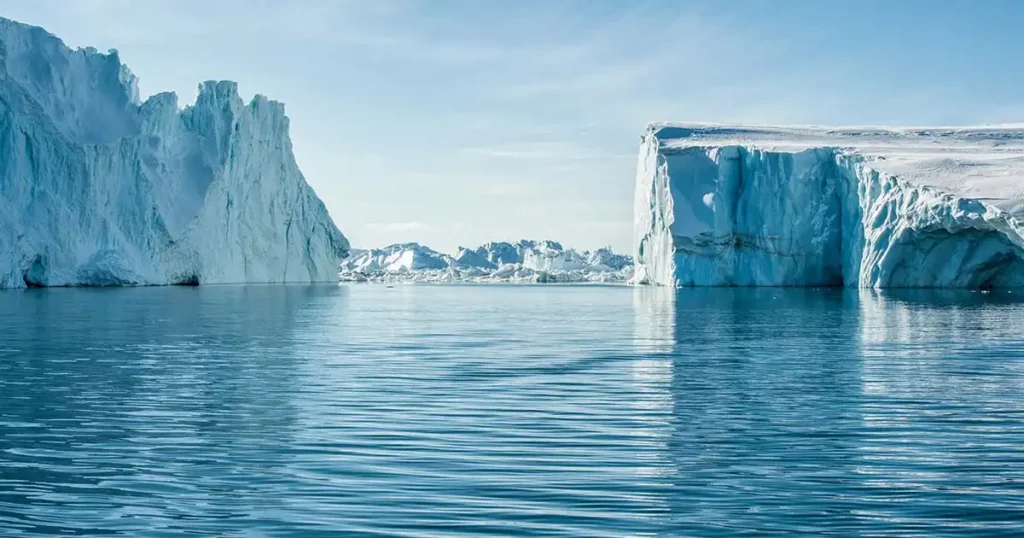
A remarkable fact about Greenland is that a whopping 80% of its landscape is blanketed in ice. This immense “inland ice” is the world’s second-largest ice sheet, trailing only Antarctica.
When flying over Greenland, the sight is awe-inspiring, with the ice sheet reaching thicknesses of up to 3,500 meters in some areas.
10. Greenland is fascinating for geologists
Greenland’s rocks hold a unique allure, captivating even those who aren’t geology experts. The patterns and shine found in these rocks are unlike anywhere else on the planet – they’re simply beautiful.
Beyond their aesthetic appeal, Greenland’s rocks are also valuable, housing numerous rare mineral and gemstone deposits. For geologists and non-professionals alike, Greenland’s geological treasures make it a truly fascinating destination.
11. No Roads in Greenland
Greenland, with its vast 2.16 million square kilometers of land, boasts an interesting feature – no roads or railways connect its settlements. While towns have roads within them, these roads stop at the outskirts.
Travel between towns relies on planes, boats, helicopters, snowmobiles, or dogsleds. Interestingly, boats are the go-to choice for transportation, and during the summer, locals can be spotted cruising the fjords, adding a unique charm to Greenland’s transportation scene.
12. No Road Connecting Any of the Towns in Greenland
Greenland stands out with an uncommon feature – no roads connect its towns. This distinctive characteristic arises from the challenging combination of rugged terrain, deep fjords shaping the coastline, the expansive Greenland ice sheet, and the sparse population.
As a result, the road system in Greenland is highly limited, with roads essentially ending at the outskirts of each town. This unique aspect adds to the island’s charm and emphasizes the reliance on alternative modes of transportation such as boats, planes, and sleds.
13. Greenland’s Short But Significant Roadway
Greenland boasts its longest road, stretching approximately 35km from Kellyville, a research station, through Kangerlussuaq, and leading to the Greenland Icesheet. Interestingly, this road had its origins as Volkswagen’s access route to their cold car test track, constructed on the inland ice.
Today, this road serves the dual purpose of facilitating tourism and providing scientific researchers with convenient access to the vast ice cap. Despite its relatively short length, this road plays a crucial role in connecting key points in Greenland’s landscape.
14. Greenland’s Airport Quirk
In Greenland, the main international airport isn’t nestled in the capital city, Nuuk. Instead, it’s found in Kangerlussuaq, which is approximately 317km away from Nuuk in a straight line. The unique geography and weather challenges in Greenland play a role in this arrangement.
While Nuuk is surrounded by mountains, Kangerlussuaq sits on an expansive plain, boasting the most stable weather in the country. This geographical distinction adds an interesting layer to Greenland’s transportation dynamics.
15. Greenland’s Airports with WWII Roots
Greenland’s international airports have a historical twist – some were once crucial WWII air bases. The island’s strategic location along the most efficient flight path between North America and Europe made it valuable for the Allies during the war.
Kangerlussuaq and Narsarsuaq airports, now serving as two of Greenland’s international gateways, were initially built and owned by the US to support the war effort. Another airport in East Greenland, called Blue East Two, has been abandoned but still preserves ruins and remnants from that wartime era. This adds a touch of history to the modern air travel experience in Greenland.
16. There are More Boats than the Cars in Greenland
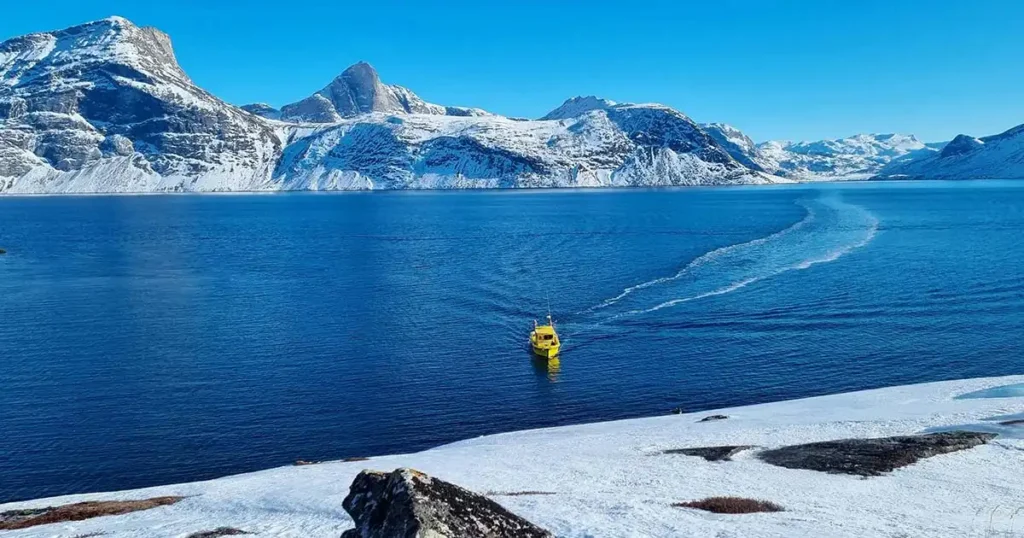
In Greenland, the extensive network of oceans and fjords serves as the primary “highway” system. This unique geography contributes to more Greenlanders owning boats than cars. Many small settlements lack cars altogether, but you’ll spot numerous boats neatly tied up along the shorelines.
This prevalence of boats over cars showcases the significant role marine transportation plays in the daily lives of Greenlanders.
17. Guardians of Winter Journeys
The Greenlandic Sled Dog remains an integral part of hunters’ lives, serving as a traditional form of transportation during the winter months. Dogsledding, an ancient practice, continues to thrive in Greenlandic culture, with many hunters relying on these loyal companions.
While the convenience of snowmobiles is on the rise due to their low maintenance throughout the year, there’s a call to preserve the cultural heritage of dogsledding. If given the opportunity, embarking on a dogsledding trip in Greenland not only offers a unique experience but also contributes to safeguarding this rich cultural tradition amidst modern changes.
18. Greenlandic Sled Dog: Arctic Guardians by Law
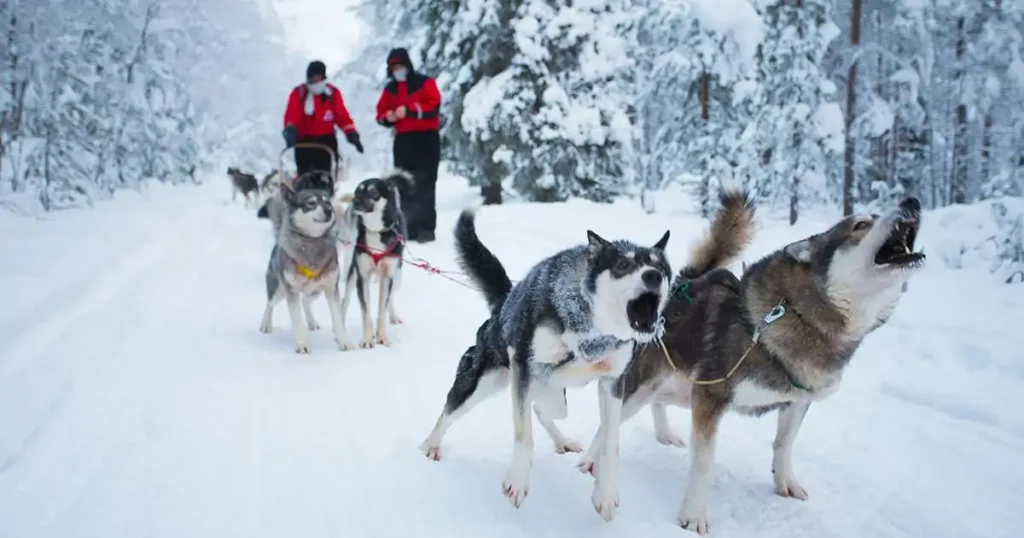
The Greenlandic Sled Dog, cultivated over thousands of years for endurance and resilience, holds a unique status. It is the exclusive breed permitted north of the Arctic Circle and in East Greenland.
To preserve the purity of this breed and secure its continued role in the traditional practices of Arctic society, strict regulations prohibit the introduction of any other dog breeds into the areas designated for dog sledding.
This legal safeguard ensures the Greenlandic Sled Dog remains an iconic and authentic part of Greenland’s cultural heritage.
19. Greenland’s Thriving Fishing Traditions
In Greenland, fishing takes center stage as a major industry. The country relies heavily on imports for most things, except for its abundant resources of fish, seafood, and other animals like whales and seals.
To manage sustainable harvesting, each administrative area is assigned specific quotas for whales, seals, and fish, preventing overfishing. Certain species, such as the blue whale, are protected and cannot be caught.
Importantly, there’s a local focus on consumption, as the export of whale and seal meat is strictly prohibited, ensuring that these resources are enjoyed within Greenland’s borders.
20. Greenland Only has One Town that is Not on the Coast
In Greenland, the towns and settlements are all nestled along the coast, as only the edges emerge from the snow during summer. However, there’s one exception – Kangerlussuaq, meaning “big fjord.” Positioned about 160km away from the main coastline at the end of a lengthy fjord, Kangerlussuaq stands as the sole town not hugging the coast.
Its “inland” location contributes to some of the coldest weather in the country. Remarkably, it marks one end of the renowned long-distance hiking trail, The Arctic Circle Trail.
21. Nuuk – Greenland’s Lively Hub
Nuuk, the capital city of Greenland, is a bustling hub where nearly one-quarter of the country’s population calls home. Despite its small size, Nuuk is vibrant and trendy, boasting the title of the largest and most cosmopolitan town on the island. The city packs a punch with numerous museums, hip cafes, and fashion boutiques.
For a glimpse into Greenland’s essence, visit the National Museum of Greenland, the Katuaq Cultural House, and the Nuuk Art Museum. Nestled at the mouth of a massive fjord system and surrounded by mountains, Nuuk provides a picturesque backdrop for easy day trips into the fjords and the surrounding nature.
22. The Marketing Magic of Greenland’s Name
Ever wondered why Greenland, covered in ice, bears such a green-sounding name? Blame it on the Viking, Eric the Red, who, in an ingenious marketing move, named it Greenland to attract settlers. His idea was to entice people to join him in establishing new settlements in this icy land.
Interestingly, the area where Eric the Red settled, South Greenland, is surprisingly green during the summer months. So, while the name may have been a promotional stunt, there’s a touch of truth in the seasonal transformation of South Greenland’s landscape.
23. Greenland’s Native Names
While we commonly refer to it as Greenland, the original inhabitants had their own names. Inuit Nunaat, meaning “land of the people,” was the Inuit name for Greenland. Presently, Greenlanders have embraced the name “Kalaallit Nunaat,” signifying “country of the Greenlanders.” These native names offer insights into the cultural richness and connection to the land that has been passed down through generations.
24. The Marvel of the Midnight Sun
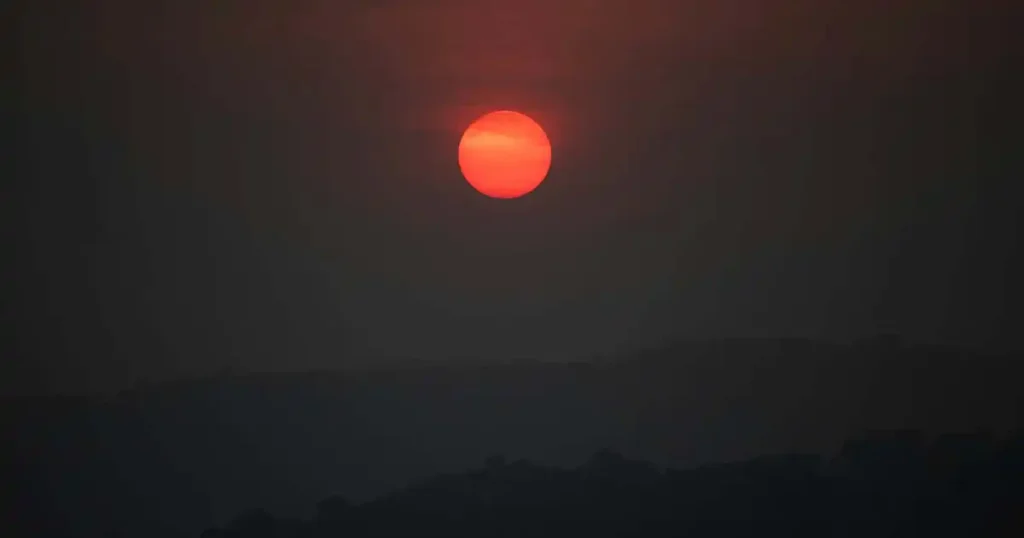
In Greenland, from May 25th to July 25th each year, something magical happens – the sun doesn’t set! This phenomenon, known as the midnight sun, keeps the sun visible all day and night. Experiencing this natural wonder is a must in a lifetime. June 21, the summer solstice and the longest day of the year, is a national holiday in Greenland. Locals seize the opportunity, basking in the endless sunlight, and often celebrate with barbecues in the great outdoors.
25. Nuuk – The Northernmost Capital City
Greenland proudly hosts the most northerly capital city in the world, Nuuk. In a friendly competition with Reykjavik, Nuuk wins the title by a few kilometers. It’s worth noting, though, that as Greenland is still a part of the Realm of Denmark, Reykjavik holds the title of the northernmost capital of a sovereign country. Nevertheless, Nuuk stands as a northern gem, boasting its unique charm and distinction.
26. Greenland’s Exclusive Gateways
Greenland, despite being part of North America, has a unique travel route. Currently, you can’t fly directly to Greenland. Instead, you need to first make your way to either Copenhagen or Reykjavik to access this captivating island. This exclusive gateway adds an extra layer of intrigue to the journey, making the arrival in Greenland all the more special.
27. Greenland’s Mosaic of Landscapes
Greenland unfolds as a patchwork of diverse landscapes, each region boasting its unique character. The scenery in East Greenland starkly contrasts with that of South Greenland, while the terrain near the Arctic Circle on the West Coast takes on a completely different form. These, in turn, bear no resemblance to the landscapes found in the far North of the country.
Every corner of this vast island reveals distinct geography, providing varied adventures and captivating Arctic views. Greenland’s rich tapestry of landscapes ensures that each part of the island offers a truly unique and immersive experience.
28. Greenland’s Pristine Air and Water
Greenland has the purest air and water in the world, thanks to its sparse population and minimal industrial activity. With very few people and even fewer cars, taking a deep breath in Greenland means inhaling exceptionally clean air.
Additionally, the country’s streams and rivers offer water so pure that you can drink directly from them without the need for any filtration. Greenland’s untouched environment provides a rare opportunity to experience nature at its freshest and purest.
29. A Perfect Place to Reconnect with Nature
Greenland offers the ideal escape from the digital hustle. While there is a mobile phone network and internet, they can be expensive and relatively slower compared to what you might be used to. Furthermore, connectivity is mostly limited to the immediate vicinity of towns and settlements.
Embrace the opportunity to disconnect from the virtual world by letting your loved ones know you won’t be reachable during your Greenland adventure. Use this as the perfect excuse to unplug, unwind, and fully immerse yourself in the breathtaking natural surroundings.
30. Greenland’s Larger Towns Are Quite Modern
Despite their small and remote nature, Greenland’s towns offer a surprisingly modern experience for many visitors. Most towns have at least one supermarket stocked with products, mainly imported from Denmark.
Additionally, larger towns boast high-quality restaurants serving international cuisine. This blend of modern amenities in Greenland’s unique and remote setting provides visitors with a comfortable and enjoyable experience.
31. Pilersuisoq Supermarkets: Must Visit for a Local Experience
Surprisingly, one of the must-visit spots in any small settlement is the Pilersuisoq supermarket. These community one-stop shops stock a diverse array of items, making them a fascinating exploration, even if you don’t have anything specific to buy.
You’ll find a curious mix of products, from rifles and ammunition to reindeer antlers, fruits, and baby formula. And, as a delightful bonus, they often sell delicious pastries, adding an extra layer of local charm to the experience.
32. Surprisingly Warm Summers in Greenland
While Greenland is often associated with bitter cold, the Summer months bring surprisingly pleasant weather. It’s not uncommon to enjoy temperatures of 18-20 degrees Celsius when the sun graces the land and the winds are mild. So, if you find yourself in Greenland during the Summer, don’t forget to pack your sunscreen and get ready to experience the unexpected warmth of this breathtaking Arctic destination.
33. Greenland has 3 UNESCO World Heritage Sites
Greenland proudly boasts three UNESCO World Heritage-listed areas, each covering vast expanses rather than specific locations.
In 2004, the Ilulissat Icefjord received its inscription, while Kujataa, celebrating Norse and Inuit farming cultures, spans across five different sites in South Greenland and earned its recognition in 2017.
Aasivissuit – Nipisat, acknowledging Inuit hunting grounds, stretches from the Greenland Ice sheet to the ocean near Kangerlussuaq and Sisimiut, earning its UNESCO status in 2018. These expansive UNESCO sites showcase the rich cultural and natural heritage of Greenland.
34. There are Viking (Norse) Ruins in Greenland
Vestiges of Viking ruins grace South Greenland and the West coast, offering a fascinating glimpse into Greenland’s Norse history. Among these, the best-preserved sites are located near Qaqortoq, Qassiarsuk, and Igaliku in South Greenland.
Visitors can embark on a variety of tours to explore these ancient Viking ruins and immerse themselves in Greenland’s rich cultural heritage.
35. There are Icebergs Everywhere in Greenland
A compelling reason to visit Greenland is the ubiquitous presence of icebergs. While the Ilulissat Icefjord is renowned for its colossal icebergs, Greenland offers a spectacle of icebergs in all shapes and sizes, with some even surpassing those found in Ilulissat.
No matter where you are in the country, the enchanting sight of icebergs is a constant and captivating feature of Greenland’s stunning landscapes.
36. Greenland is Home to the Most Active Glacier of the Northern Hemisphere
Greenland boasts the northern hemisphere’s most active glacier, known as Sermeq Kujalleq, Jakobshavn Glacier, or Ilulissat Glacier, which feeds into the Ilulissat Icefjord. Renowned for its productivity, the colossal quantity of ice breaking off from this glacier contributes significantly to the breathtaking spectacle that is the Ilulissat Icefjord. Witnessing the dynamic forces at play here makes it a must-see marvel for those exploring Greenland.
37. A Rare Delight: Greenland’s Singular Hot Spring
Greenland offers a unique contrast to Iceland when it comes to hot springs. While Iceland is abundant with hot springs, Greenland takes a different approach. There’s just one easily accessible hot spring, Uunartoq, nestled in the picturesque surroundings of South Greenland. This rarity adds an extra layer of charm to the Greenlandic experience, giving Uunartoq a special and distinctive thermal delight.
38. Greenland’s is Almost Tree-Less
Greenland’s landscape is primarily treeless, reflecting its Arctic desert nature. Despite the challenging conditions, a few adventurous attempts have been made to cultivate trees in this vast land.
The most substantial “forests,” if they can be called that, are located near Nanortalik and Narsarsuaq in South Greenland. While trees are a rare sight, their presence adds a unique and resilient touch to the Arctic terrain of Greenland.
39. Greenland Is One of the Best Places to See Northern Lights
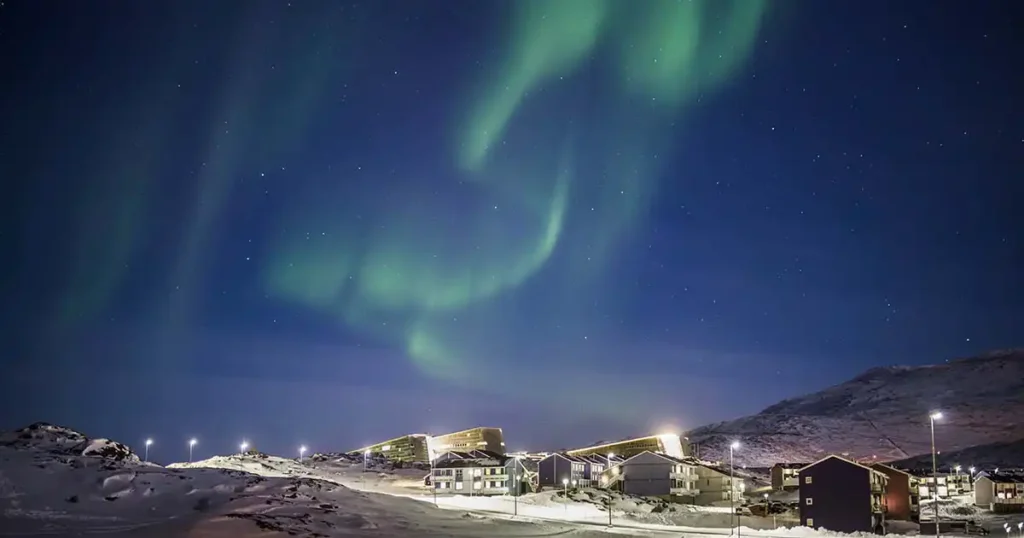
Greenland stands as one of the world’s premier locations to witness the captivating display of the Northern Lights. With 24-hour darkness during winter and minimal light pollution, the auroras illuminate the Greenlandic skies with a brilliant dance of colors.
While the Northern Lights can be observed from various locations, one of the prime spots is near Kangerlussuaq. Known for having more than 300 days of clear skies each year, it provides an ideal backdrop for experiencing the enchanting spectacle of the Northern Lights.
40. Greenland’s Winter Wonderland for Ski Enthusiasts
Greenland emerges as a winter wonderland for skiing enthusiasts. While there are only a few small downhill ski centers, the pristine 2000m descents from mountain peaks to the ocean make Greenland an irresistible destination for heli-skiers and ski tourers from across the globe.
The untouched landscapes and challenging terrains provide an exhilarating playground for those seeking extraordinary skiing experiences in this Arctic realm.
41. Whale Watching is Huge
Greenland becomes a hotspot for whale watching during the summer months as many species of whales make their annual migration through its waters. The playful Humpbacks, in particular, are abundant in the surrounding seas.
Numerous locations in Greenland offer specialized whale-watching tours, providing an opportunity to get up close to these majestic creatures without causing disturbance.
For the adventurous, some locations even allow kayaking and stand-up paddleboarding alongside whales, creating a unique and immersive experience with these magnificent marine giants.
42. Angler’s Paradise: Easy Fishing in Greenland
Greenland stands out as an angler’s paradise, offering relatively easy fishing opportunities in its cold and nutrient-rich waters. The extensive coastline and numerous fjords make it a haven for fishing enthusiasts.
Abundant fish species, such as Arctic char, cod, salmon, and halibut, thrive in Greenland’s waters, creating a diverse and rewarding experience for those looking to cast their lines in this pristine Arctic environment.
43. Greenland’s Gift to Water Travel: The Invention of the Kayak
The ingenious Inuit hunters from Greenland take credit for inventing the kayak, and the word “kayak” itself is derived from the Greenlandic word “qajaq.” These skilled hunters designed the kayak, an exceptionally maneuverable watercraft, tailored to their needs.
Traditional qajaqs differ significantly from what we commonly see today, being much smaller and narrower. Each kayak was custom-built to precisely fit the body of the individual hunter, showcasing the craftsmanship and innovation of Greenland’s Inuit community in developing this remarkable water transportation.
44. Huge Variety of Wildflowers in the Summer of Greenland
As the snow melts, Greenland transforms into a vibrant landscape with a vast variety of wildflowers. The explosion of colorful blooms during the summer season often surprises visitors.
Beyond the visual delight, later in the summer, you can also forage for mushrooms, blueberries, and crowberries, adding a flavorful touch to the enchanting experience of Greenland’s Arctic vegetation.
45. Escape into Nature: The Arctic Circle Trail
Greenland’s most renowned hiking route, the Arctic Circle Trail, spans 160km from Kangerlussuaq to Sisimiut, captivating hikers during the summer months. Despite its rising popularity, the trail remains uncrowded, allowing trekkers to wander for hours without encountering another soul, even in peak season.
Hiking the Arctic Circle Trail requires thorough preparation, as there are no opportunities to restock supplies along the way. The trail is dotted with nine mostly tiny huts, strategically spaced approximately a day apart, providing minimal infrastructure. For those seeking complete isolation and immersion in nature, the Arctic Circle Trail stands as the ultimate hiking adventure in Greenland.
46. Midnight Sun and Polar Darkness
Between approximately May 25th and July 25th, the Sun refuses to set for locations above the Arctic Circle in Greenland. The specific dates vary based on how far north you are, and even if you find yourself just south of this line, complete darkness never envelops the surroundings. Instead, you experience a perpetual twilight.
Conversely, during the winter months, a contrasting phenomenon occurs. Above the Arctic Circle, the Sun remains below the horizon, casting a prolonged period of polar darkness that lasts for several months, creating a unique celestial spectacle in Greenland.
47. You Can Get Sunburned in Greenland’s Intense Arctic Sun
Surprisingly, sunscreen is a must-have in Greenland, contrary to common expectations. The Arctic Sun’s strength is formidable, and sunburns are possible even in the middle of winter, thanks to the sunlight reflecting off the snow.
Regardless of the time of year, packing sunglasses is essential. Conditions like snow blindness and glacier blindness, caused by the intense glare of the sun on snow and glaciers, are real and temporary afflictions that can be avoided with proper eye protection.
48. Greenland’s Charming Homes
Greenlandic houses, with their small size and vibrant colors, create a picturesque scene against the Arctic landscape. Dating back to colonial times, these homes were traditionally painted brightly to stand out. In the past, each color held a specific meaning indicating the building’s use, but modern Greenlanders have the freedom to choose any color they desire for their homes, contributing to the unique and charming visual appeal of Greenlandic architecture.
49. Climate Change Impact
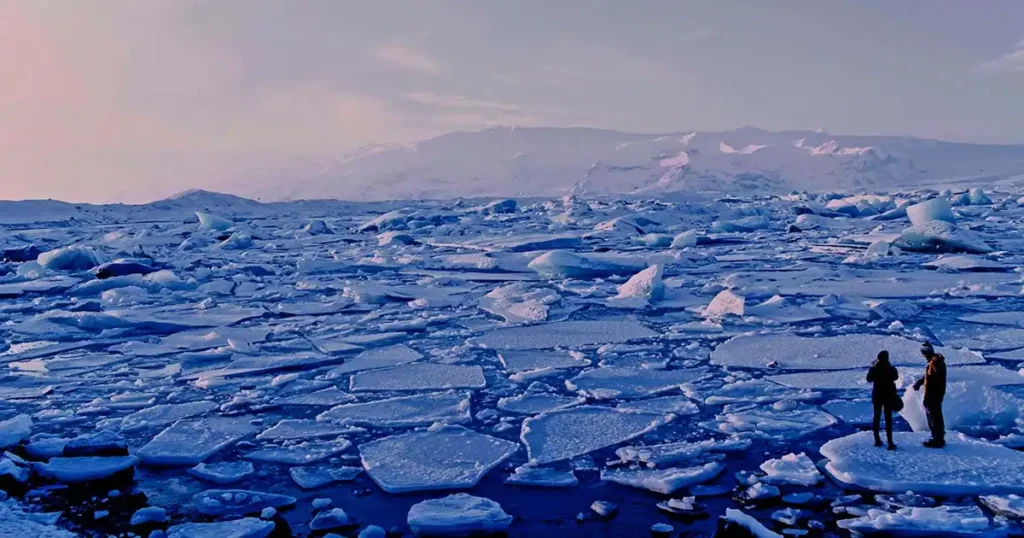
Greenland’s icy landscape is feeling the heat of climate change. Warmer temperatures are causing big problems – the massive ice sheet, covering about 80% of Greenland, is melting more than before, and glaciers are pulling back.
This is bad news for the environment because the ice plays a crucial role in regulating the planet’s temperature. The meltwater contributes to rising sea levels, putting coastal areas at risk. Climate change is like a wake-up call, showing how human actions affect even the remotest places, and why everyone needs to work together to protect our planet.
50. Inuit and European Traditions
Greenland remains a unique blend of two distinct cultures, Inuit and European, coexisting side by side. While the influence of Western culture is rapidly growing, Greenland retains a significant part of its cultural heritage. In the winter, it’s not uncommon to witness both dogsleds and snowmobiles sharing the same paths.
During special occasions, many Greenlanders still proudly wear their National Costume, a tradition that persists alongside contemporary fashion choices. Local supermarkets offer a mix of traditional meats sourced from Greenland’s millennia-old hunting and fishing practices, alongside imported food items.
This cultural tapestry highlights the harmonious coexistence of Inuit and European traditions in modern Greenland.
51. Greenland’s Culinary Heritage
The traditional Greenlandic diet revolves around the bounty of hunting and fishing, featuring whale, seal, fish, seafood, musk-ox, reindeer (caribou), and ptarmigan. These foods have been staples for the Greenlandic Inuit, and many Greenlanders continue to relish them regularly.
Hunting remains a way of life in Greenland, and the eagerly anticipated hunting seasons bring excitement each year. It’s not uncommon to spot Greenlanders engaging in fishing activities, preserving and celebrating the enduring connection to their culinary heritage.
52. Modern Greenlandic Cuisine
Modern Greenlandic cuisine is a delightful fusion, blending traditional main ingredients with flavors and techniques introduced by chefs from around the world. Menus often feature reindeer or musk-ox burgers alongside dishes like whale Thai red curry.
Remarkably, Greenland boasts excellent Asian-inspired fusion cuisine, reflecting the influence of the diverse cultural tapestry in the country. Thais and Filipinos, the second-largest immigrant group in Greenland after the Danes, contribute to the rich culinary landscape found in almost all major towns across the country.
53. A Toast to Celebration: Greenlandic Coffee
In Greenland, Greenlandic Coffee is a special occasion treat. This delightful concoction involves a blend of whiskey, Grand Marnier, Kahlua, whipped cream, and, of course, coffee. The preparation of Greenlandic Coffee comes with an entire story, turning the act of ordering one into a captivating spectacle worth experiencing. Cheers to the celebration with this unique and flavorful Greenlandic tradition!
54. Greenland is a Home to Special Arctic Animals
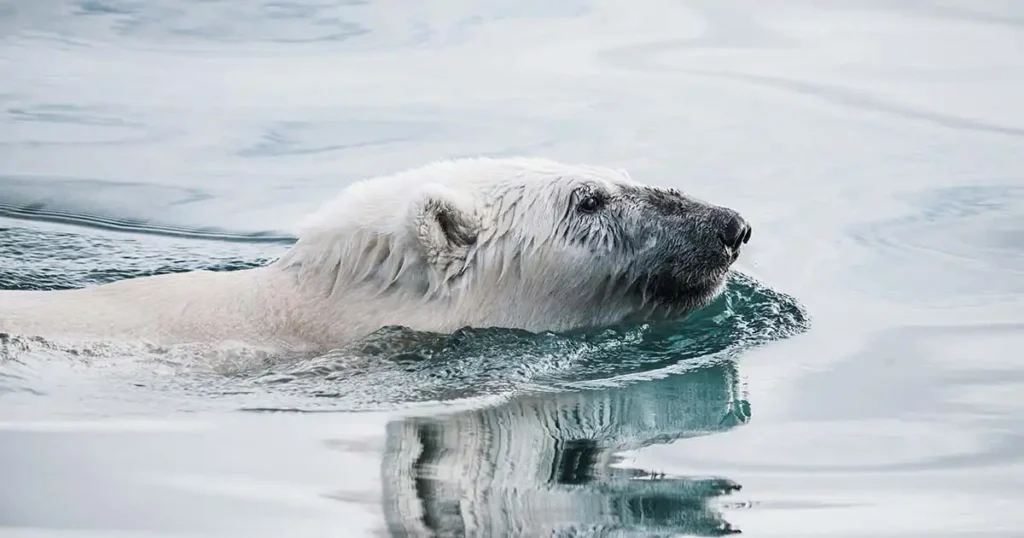
Greenland is like a home for special Arctic animals. There, you can find big white polar bears, cute seals, and giant whales swimming in the cold waters. If you look around, you might spot reindeer with their impressive antlers. Birds of all kinds also make their homes in Greenland.
The diversity of these creatures adds to the uniqueness of Greenland’s natural world. It’s like a big, icy playground for these amazing animals, and they each play a role in keeping the balance of the Arctic ecosystem.
55. Cheers to Greenlandic Craft: Micro-Breweries
A delightful Greenlandic fact! While Danish beer is prevalent, Greenland boasts three micro-breweries operating on a smaller scale. The largest among them is Godthaab Bryghus, located in Nuuk, offering beer enthusiasts the chance to indulge in a tasting tour.
For a unique Greenlandic brew, keep an eye out for offerings from Qajaq Brewery in Narsaq, South Greenland, and Immiaq Brewery in Ilulissat, Disko Bay. Their beers, available in bottles and on tap in select locations, contribute to the growing craft beer scene in this Arctic nation.
56. Arctic Elegance: The West Greenlandic National Dress
The West Greenlandic National Costume is a spectacular fusion of functional Arctic wear, adapted for the harsh climate, and dramatic embellishments influenced by materials brought to the island by Danish colonists.
Adorned with sealskin, various types of seal leather, fox or dog fur, cotton, and vibrant imported “pearls,” this breathtaking artwork remains a common choice for Greenlandic women during special occasions. The men’s costume, a white cotton anorak paired with black trousers, pales in comparison to the striking elegance of their female counterparts.
57. Artistic Transformation: The Tupilaq Souvenir
The shamanic tupilak, once a mystical figure, has evolved into one of Greenland’s most iconic souvenirs. Crafted by master artisans, modern tupilaks often take the form of fantastical creatures carved from reindeer antler, musk-ox horn, narwhal tooth, or sperm whale tooth.
While they are the most popular souvenirs in Greenland, it’s essential to note that those crafted from reindeer or musk-ox horn are the only ones allowed to be taken out of Greenland due to conservation regulations.
58. Greenland Has Some of the Best Musicians in the World
Greenlandic music stands among the finest, yet it remains relatively undiscovered on the global stage. While most songs are sung in Greenlandic, contemporary musicians showcase the universal power of their music that transcends language barriers.
If you have the opportunity to see a live performance, especially by one of the more recent bands still actively releasing music, seize the chance to experience the vibrant and unique sounds of Greenland’s talented musicians.
59. Musical and Cultural Festivals in Greenland
Greenland’s cultural vibrancy comes to life through various music and cultural festivals held throughout the year, especially in Nuuk and Sisimiut. Both cities boast dedicated Cultural Centres, hosting a diverse array of events annually. Key highlights include large music festivals like Akisuanerit in Nuuk and Arctic Sounds in Sisimiut.
Nuuk further enriches its cultural scene with the National Theatre, four exhibition spaces, and the grand Nuuk Nordisk Culture Festival, a biennial event where artists from Nordic nations collaborate and showcase their work. Additionally, smaller music and cultural festivals dot various towns and settlements across the country, creating a year-round celebration of Greenland’s rich cultural tapestry.
60. Greenland is Home to the Toughest Ski-Race in the World
The Arctic Circle Race stands as a formidable test for cross-country skiers, spanning 160km over three intense days. Widely acclaimed as the world’s toughest ski race, participants must demonstrate exceptional fitness, stamina, and grit.
In this ultimate challenge, competitors face the added elements of camping and cooking for themselves for two nights, braving temperatures that often plunge below -20 degrees Celsius. The Arctic Circle Race is a true testament to the indomitable spirit of those who dare to take on this extraordinary ski adventure.
61. Running Challenges and Marathons in Greenland
For running enthusiasts, Greenland offers a unique stage for various marathons and races throughout the year. Among them, the Nuuk Marathon, situated in the city, is renowned as one of the world’s toughest, echoing the challenging spirit of the Arctic Circle Race.
Runners can also embark on marathons in different Greenlandic locations, including Aasiaat (Midnight Sun Marathon), Kangerlussuaq (Polar Circle Marathon), Sisimiut, Ilulissat, and Qaqortoq. With additional shorter race options, Greenland provides a diverse range of running challenges against its stunning Arctic backdrop.
You may also like:
- 20 Proud Facts About India
- 25 Interesting Facts About Thailand
- 20 Interesting Facts About Australia
- 10 Amazing Facts About Turkey
- 20 Interesting Facts About New Zealand
- 10 Interesting Facts About Canada
Wrapping Up
In concluding our expedition through the 60 captivating facts about Greenland, we’ve traversed the vast landscapes, delved into the island’s ancient history, and marveled at its modern marvels. Greenland, with its pristine beauty and cultural richness, remains a source of endless fascination.
From the colossal ice sheets to the vibrant cultural tapestry, Greenland is more than just the world’s largest island—it’s a testament to the resilience of nature and the enduring spirit of its people. As we reflect on the uniqueness of this Arctic gem, let these 60 facts about Greenland serve as a doorway to further exploration, understanding, and appreciation.
Whether it’s the midnight sun, the Northern Lights, or the tales of ancient civilizations, Greenland beckons us to delve deeper into its wonders. As we bid adieu to this whirlwind tour of facts, we hope you’re inspired to embark on your Greenlandic adventure, armed with newfound knowledge and a deeper connection to this extraordinary corner of the world. Greenland, with its untold stories and majestic landscapes, awaits those curious enough to explore its depths.



